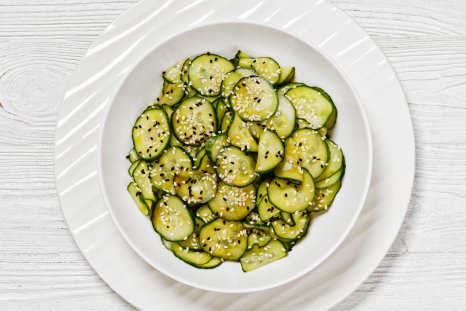The discovery of a surprising survival mechanism used by beer-brewing yeast could lead to new approaches for fighting cancer.
This is the promise of researchers led from the University of Virginia, who say that the way the useful fungus hibernates when food is scarce mirrors how cancer cells endure starvation.
Periods of severe nutrient shortages are common for cancer cells as a result of their unchecked growth, forcing them to go dormant to survive and escape detection by our bodies' immune systems.
Understanding how exactly they achieve this trick could help develop new ways to make cancer cells vulnerable to starvation, making them easier to treat.
The study was undertaken by biochemist professor Ahmad Jomaa of the University of Virginia School of Medicine and his colleagues.
"Cells can take a break when things get tough by going into deep sleep in order to stay alive—then at a later point they seemingly just come back," Jomaa said in a statement.
"That's why we need to understand the basics of adaptation to starvation and how these cells become dormant to stay alive and avoid death."
Along with having been used to produce beer for centuries, the yeast species Schizosaccharomyces pombe is the ideal model organism to study these processes because it is so similar to human cells.
In their study, Jomaa and colleagues used powerful microscopes to study what happens inside cells of S. pombe when they go into hibernation.
The team discovered that, when yeast go into hibernation to avoid stress, something totally unexpected happens to their so-called mitochondria—the batteries of biological cells.
Specifically, the mitochondria get coated with deactivated ribosomes, complex molecular machines that normally make proteins within cells.
And the ribosomes had attached themselves to the cellular batteries "upside down," using just a tiny part of their molecular structure, in a fashion never seen before.
"We knew that cells will try to save energy and shut down their ribosomes, but we were not expecting them to attach in an up-side state on the mitochondria," paper co-author and biophysicist Maciej Gluc, also of the University of Virginia, said in a statement.
The team is not quite sure why this strange form of attachment between the ribosomes and the mitochondria happens.
"There could be different explanations," added paper co-author and structural biologist Simone Mattei of the European Molecular Biology Laboratory in Heidelberg, Germany.
"A starved cell will eventually start digesting itself, so the ribosomes might be coating the mitochondria to protect them."
Alternatively, he explained, they might also attach to the mitochondria to set off a signal within the cellular battery.
With their initial study complete, the researchers are now working to understand how cells determine when to go dormant and how they manage to reawaken.
"For now, we will use yeast because it is much easier to manipulate," said Jomaa, explaining that they also hope to explore the same phenomenon directly in lab-grown cancer cells.
He concluded: "Ultimately, I hope that my group's research will lay the foundation for discovering new markers to track dormant cancer cells. These cells are not easily detected in diagnostic settings, but we are hopeful that out research will generate more interest in helping us reach our goal."
Do you have a tip on a health story that Newsweek should be covering? Do you have a question about cancer? Let us know via health@newsweek.com.
Reference
Gemin, O., Gluc, M., Rosa, H., Purdy, M., Niemann, M., Peskova, Y., Mattei, S., & Jomaa, A. (2024). Ribosomes hibernate on mitochondria during cellular stress. Nature Communications, 15, 8666. https://doi.org/10.1038/s41467-024-52911-4
Disclaimer: The copyright of this article belongs to the original author. Reposting this article is solely for the purpose of information dissemination and does not constitute any investment advice. If there is any infringement, please contact us immediately. We will make corrections or deletions as necessary. Thank you.



